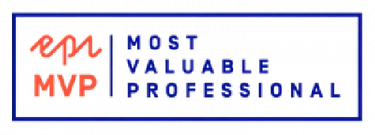Syntax highlight code snippets in Episerver - Part 2: Styles and language support
- Part 1: The basics
- Part 2: Styles and language support
- Part 3: Display language label
After completing part 1, setting up syntax highlighting with the bare minimum, it's time to let your code shine.
Step 1: Decide on a Style
Highlight.js has 95 different styles, or themes. Find one that you like, and adjust the link to the CSS file with the name of the style. I like Tomorrow Night Bright.
<link rel="stylesheet"
href="//cdn.jsdelivr.net/gh/highlightjs/[email protected]/build/styles/tomorrow-night-bright.min.css">Step 2: Customize language dropdown
The dropdown list with languages in TinyMCE can be customized like this:
var codeSamplesSettings = new Dictionary<string, object>
{
{ "codesample_languages", new object[]
{
new { text = "C#", value = "csharp" },
new { text = "CSS", value = "css" },
new { text = "HTML", value = "html" },
new { text = "JavaScript", value = "javascript" },
new { text = "JSON", value = "json" },
new { text = "Plaintext (no label)", value ="plaintext"},
new { text = "Razor CSHTML", value ="razor" },
new { text = "SQL", value = "sql" },
new { text = "WebForms", value = "xhtml" },
new { text = "XML", value = "xml" },
new { text = "YAML", value = "yaml" }
}
}
};
config.Default()
.AddPlugin("codesample")
.Toolbar("codesample")
.RawSettings(codeSamplesSettings);A complete list of supported languages can be found on GitHub. Some languages, like Razor CSHTML require a separate package. Additional packages have to be loaded like this, before you call the init method.
hljs.registerLanguage('cshtml-razor', window.hljsDefineCshtmlRazor);Found this post helpful? Help keep this blog ad-free by buying me a coffee! ☕
